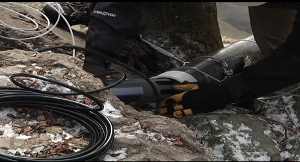Dec 16 2010
In order to determine the condition of drinking water due to horizontal gas drilling, a pre-drilling water examination will be carried out for identifying the variation in water quality before and after the drilling process, with respect to the statements of the residents of Pennsylvania.
Various sensors will be employed for executing these tests. Ten of the sensors will be integrated along the branches of the Southern Tier Susquehanna River, for monitoring the quality of the water.
 Water quality assessment sensors
Water quality assessment sensors
According to Kimberly Dille, of the Susquehanna River Basin Commission, the sensors will be monitoring the conductivity, dissolved oxygen, temperature, pH and the turbidity conditions of the water. He remarked that, the quality will be assessed every five minutes and upon the progression of horizontal gas drilling in New York, the Susquehanna River Basin Commission will be measuring the status of water irrespective of time, to avoid the contamination of water.
Andrew Gavin, of SRBC, commented that, when sensing any change in the normal water quality, a warning will be given to their office, providing rapid alertness to the officials about the condition. The SRBC has been collaborating with the Tioga County Planning Department for detecting areas to install these sensing devices on the Apalachin and Catatonk Creeks. According to Elaine Jardine, Director of Tioga, Planning and detecting the quality of water prior to the drilling process, while drilling and after the drilling process is highly significant for knowing the safety of the drinking water.
The SRBC will be integrating ten sensors in New York and has already installed thirty in Pennsylvania. After the establishment of a monitoring station, anyone can assess the status of water through SRBC.net.